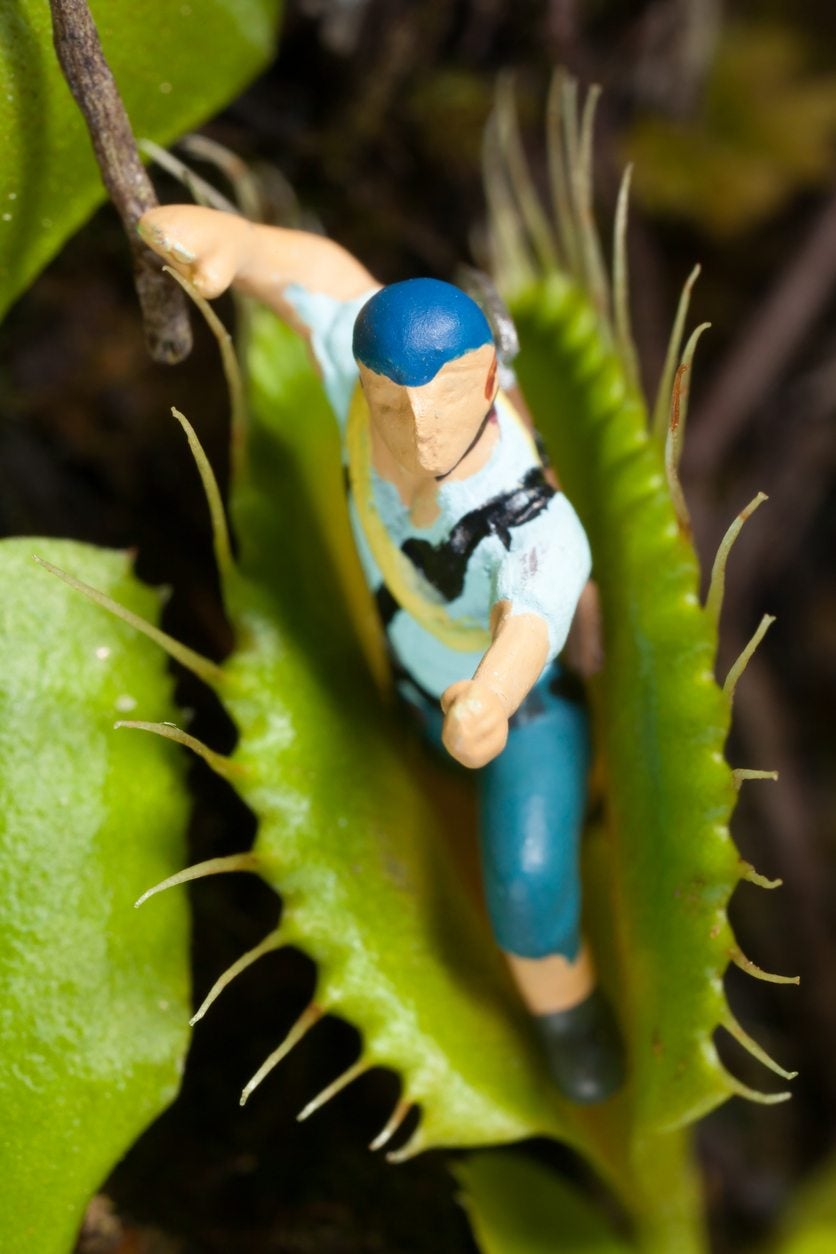Creating Living Gardens: How To Make A Garden Come To Life


We all know that gardens with seasonal interest and those that appeal to all the senses make the most attractive landscapes. So why not use these same concepts in bringing the garden to life. In addition to interest, what other benefits can be found with creating living gardens? Simple...they can act as home security while you're away or sleeping. Read on to learn more about how to make a garden come to life...literally.
Using Plant with Life-Like Qualities
You may not know it, but plants are not lifeless. They can see, hear, taste, smell, feel, walk, creep, tumble, set traps, kill and more. In fact, plants are actually rather smart (as in the brain cactus) and more in tune with their surroundings than we are, making them wonderful in keeping pests and intruders away. That said, you want to take good care of your garden plants; otherwise, they may put a target on your back. Don't be put off by the darker side of plants. Bringing the garden to life really can be a wonderful thing. They have much to offer the landscape. So with that, here are some great choices to consider as you design a living garden space of your own. Again, try to include sensory plants that cover all areas, as this will provide the most protection. I spy a plant and it's looking right at me. Likely the most important additions in a living garden include:
- Eyeball plant
- Doll's eye
- Eye of newt (mustard seed)
- Oxeye daisy
- Eye root (goldenseal)
- Dragon's eye
- Eyelash sage
- Job's tears
- Window plant
Forget about the slogan, "Do you hear me now." These plants are certain to keep their "ears" open day and night:
- Elephant ear
- Angels trumpet (beautiful, musical and deadly)
- Corn
- Lamb’s ear
- Cat’s ear
- Mouse ear hosta
- Jelly ear fungus
- Mouse-ear chickweed
All plants eat, and there are endless varieties that have a taste for additional nutrients. These may include:
- Carnivorous plants
- Hydnora Africana (has interesting jaw-like leaves)
- Hot lips plant
- Serpent's tongue (violet)
- Snapdragon
- Hart's tongue fern
- Mother-in-laws tongue
- Tooth leaved geranium
- Dogtooth violet
- Toothwort
- Toothache plant
- Beard tongue
- Bleeding tooth fungus
Smells in the garden are a definite help, especially if they're bad (remember, we're trying to deter intruders). Additionally, it helps when plants that smell detect unwanted pests by picking up on their scents. Examples here are:
- Skunk cabbage
- Carrion flower
- Stinkhorn
- Corpse plant
- Nettleleaf noseburn
- Sneezewort (yarrow)
- Sneezeweed
- Calf's snout (snapdragon)
- Pig's snout (dandelion)
- Nasturtium (meaning nose twisting)
Plants that feel or move make great assets in the garden provided you remain on their good side. Choose from the following:
- Buddha’s hand
- Strangler fig
- Dodder (aka strangleweed)
- Digitalis
- Coltsfoot
- Walking onion
- Touch me nots
- Devil’s fingers
- Dead man’s finger
- Walking palm
- Inch plant
- Tumbleweed
- Tulips (known for their ability to walk to more desirable areas of the garden)
- Walking iris
- Walking ferns
- Sensitive plant
- Mexican jumping beans
- Dancing girls
- Grapple plant
- Creeping Charlie
- Creeper vine
- Windflower
Enjoying Your Living Garden Space
Plants with life-like qualities have much to offer the garden. In addition to those above, you'll want to include plants that remain alert at different hours of the day or night like:
Sign up for the Gardening Know How newsletter today and receive a free copy of our e-book "How to Grow Delicious Tomatoes".
And don't forget to add those that take notes (telegraph plant), those that pick pocket would-be intruders (robber plant), those that follow pests around (hitchhiker plants), those that fake their death (resurrection plant) or those that stand out as guardians of the garden (old man cactus). And once you've chosen your plants and placed them strategically, all you need to do is provide for their welfare and enjoy the safety that a living garden provides in return. The best way to enjoy your living garden is from afar, especially at night. Don't want to get stuck out there after dark, when many of the plants come to life with those hungry ‘mouths’ and far reaching vines, which are great for snatching up something to munch on, perhaps a foot standing nearby. And while you might think you're being quiet, all those ‘ears’ will be listening and ‘eyes’ will be watching! Sensory plants bring your garden to life. They can hear what you may not, picking up on the slightest vibration. They have eyes with which to see and mouths with which to eat. They smell and they move. Plants serve a purpose and bringing the garden to life is a great way to take advantage of all that they do, especially in home protection.
Happy April Fool's Day!

Nikki Tilley has been gardening for nearly three decades. The former Senior Editor and Archivist of Gardening Know How, Nikki has also authored six gardening books.